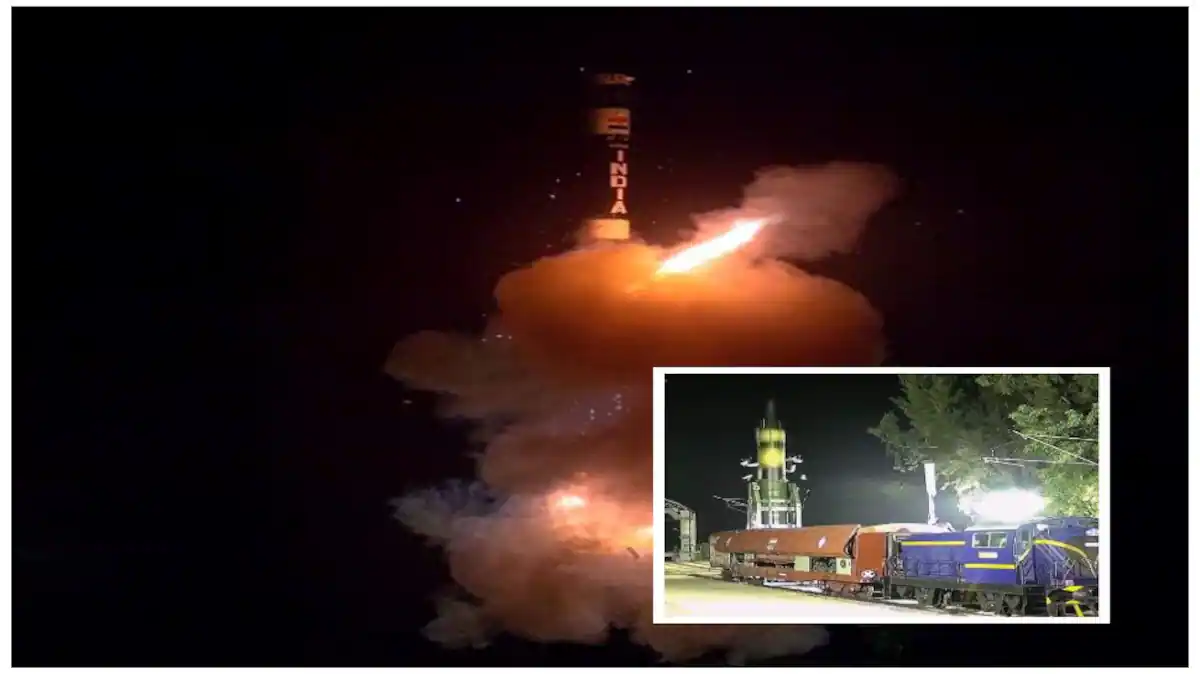All You Need To Know About India’s Rail-Based Agni-Prime Missile – Strike Range, Stealth, Technology, Strength, Challenges And Defence Edge
By Zee Media Bureau,Zee News
Copyright india

New Delhi: India marked a historic milestone on September 25, 2025. The Defence Research and Development Organisation (DRDO) successfully tested the Agni-Prime missile from a rail-based mobile launcher at Chandipur, Odisha. This missile can strike targets up to 2,000 kilometres away. Defence Minister Rajnath Singh called it a moment of national pride. The rail launcher adds a unique dimension to India’s strategic capabilities.It is a specialised train-like system moving on railway tracks. The missile is stored in a canister, enabling it to launch while the train is moving. Earlier, missiles relied on fixed launch sites or trucks, but the rail system allows India to mislead adversaries.The Agni-Prime rail test enhances speed, range and stealth. The missile can be fired without stopping, ensuring minimal reaction time. The 2,000-kilometre range allows precise targetting of enemy bases. The train resembles an ordinary cargo train, keeping movements hidden from intelligence surveillance.With successful launch, India joins a select group of nations with rail-launched ballistic missile capability, alongside countries like the United States, Russia, China and North Korea. This is a step forward in India’s self-reliance and defence strength.The advantages of the rail mobile launcher are immense. It is safer because it can move across the rail network, making detection difficult. Launches occur without long preparation, and trains can hide among normal cargo, providing operational flexibility. Multiple missiles can be carried on a single train for a stronger and faster strike. Canister design ensures functionality in rain, dust or heat, allowing rapid response along borders with China or Pakistan.However, the system comes with challenges. Building and maintaining it is costly, which is why even the United States avoided it. Maintenance on a moving train is complex and requires regular inspections. Its dependence on railway lines limits mobility in forests or mountainous regions. Enemy surveillance could potentially track the train, and large Intercontinental Ballistic Missile (ICBM)-class missiles make the train heavy, reducing speed.Despite these limitations, the strategic advantages outweigh the drawbacks for major powers.Globally, rail-based ballistic missile launchers are rare. Only a handful of countries have developed them. Russia’s RT-23 Molodets (SS-24 Scalpel) was operational but is now retired. The United States experimented with the LGM-118 Peacekeeper on rails but no longer maintains an operational system. North Korea tested rail-launched missiles in 2021, though only for short ranges. China primarily uses truck-based systems but is developing rail capabilities. India’s inclusion in this elite club signals its growing strategic influence.The successful test of the Agni-Prime rail launcher marks a leap in India’s defence power. It increases launch speed and strike range while maintaining stealth, strengthening deterrence and strategic flexibility. Challenges exist, but the benefits establish India firmly among the world’s top defence nations. The missile is expected to join active service soon, highlighting India’s rising stature in global security.



